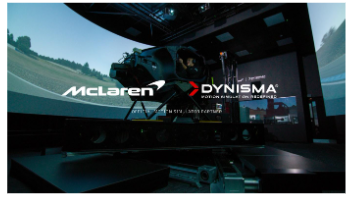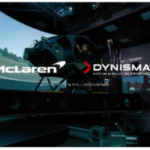- A Dynisma Motion Generator™ (DMG™) DMG-1 simulator has been installed at the McLaren Technology Centre in Woking, Surrey
- Dynisma is McLaren Automotive’s Official Motion Simulator Partner
- Motorsport-inspired DMG technology provides ultra-low latency and high bandwidth setting new standards in automotive simulator technology, offering an experience as close to reality as possible
- The DMG-1 has played a key role in the virtual development of McLaren Automotive’s next ‘1’ car, the McLaren W1, demonstrating high correlation between simulated and physical test results
- McLaren Automotive is using DMG-1 to virtually develop dynamics, aerodynamics, NVH, HMI, propulsion systems and control systems of new supercars
- Dynisma’s simulators accelerate new car development by expediting the deployment of prototype vehicles for physical testing
- Dynisma simulators are utilised by OEMs and topflight motorsport teams worldwide
- Media pack
- Video
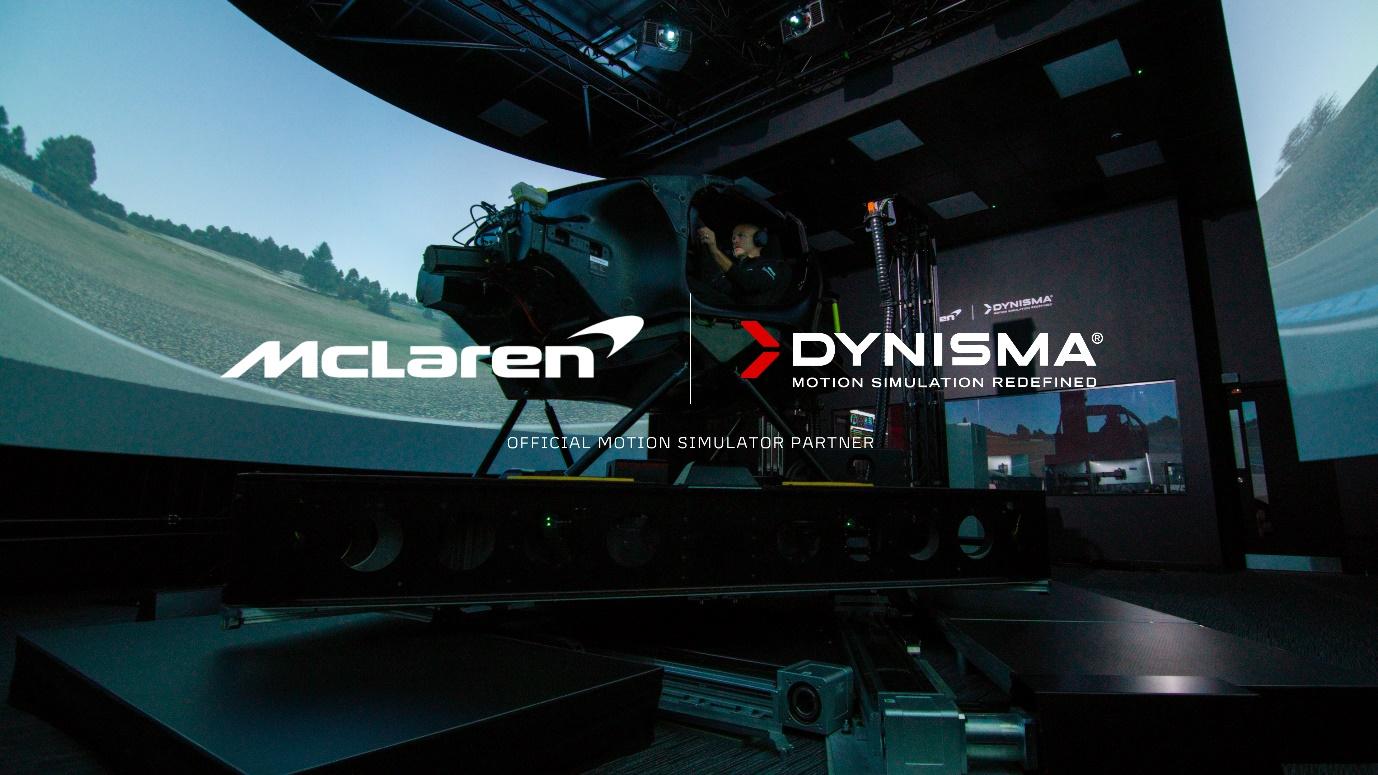
Bristol, UK. 8 October: Dynisma, the UK-based motion simulation technology company, has successfully installed a Dynisma Motion Generator™ (DMG™) at the McLaren Technology Centre in Woking, Surrey. The state-of-the-art DMG-1 simulator has been integrated into the development programme of the manufacturer’s new supercar, the McLaren W1.
The commissioning of this advanced simulator marks a significant expansion of McLaren Automotive’s virtual development capabilities, enabling the historic British supercar maker to accelerate prototype programmes and improve vehicle performance with exceptional precision.
The partnership brings Formula 1-level simulation capabilities to McLaren Automotive. With ultra-low latency and high bandwidth, DMG-1 offers unparalleled realism, enabling engineers and test drivers to virtually experience the same scenarios they would face on proving grounds and circuits worldwide.
Revolutionising development
McLaren has already utilised DMG-1 in the final development phases of the new McLaren W1, validating its active aerodynamic systems, suspension setup, and damper controls through a combination of simulator-based and physical testing.
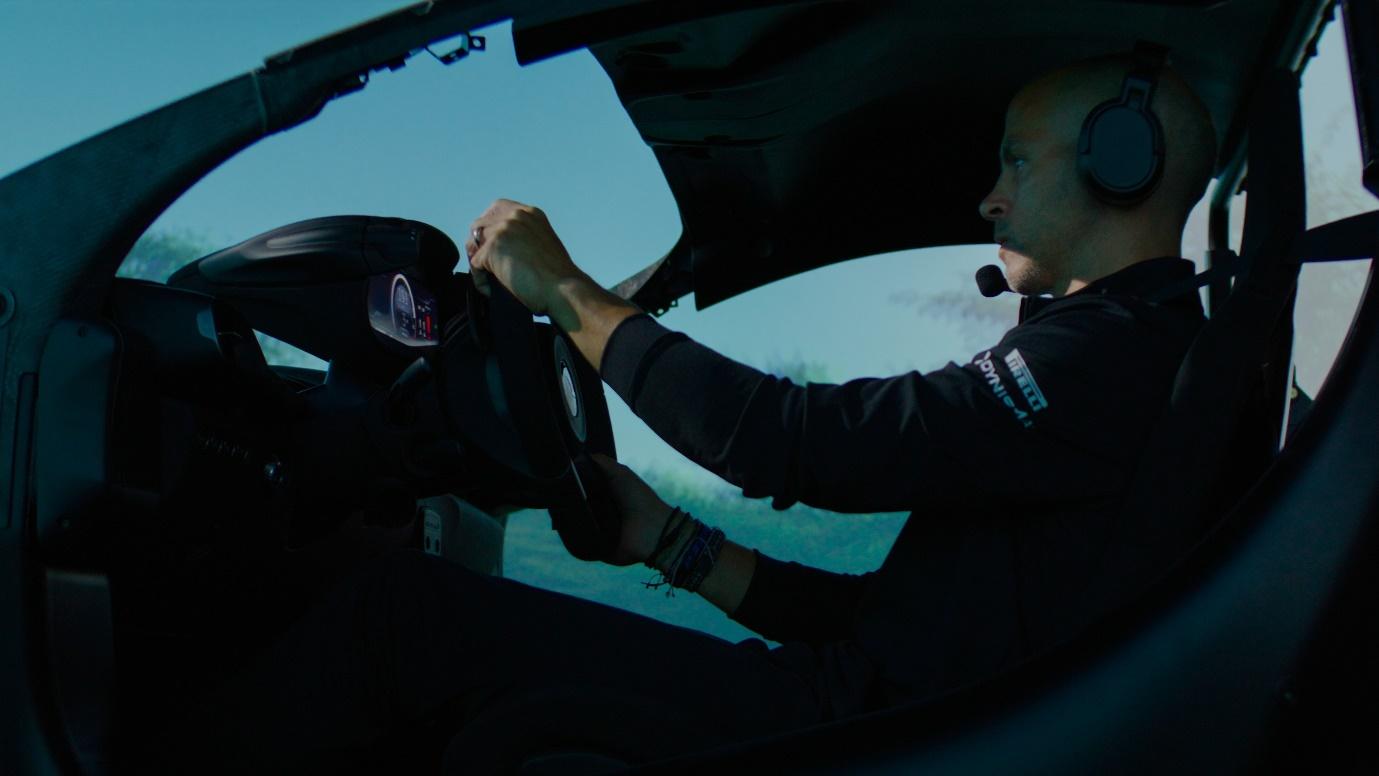
By replicating the precise data signatures behind real-world dynamic behaviour, the simulator gives engineers greater clarity on how cars perform and why they feel a certain way – insight that’s vital in defining the DNA of a McLaren supercar.
“The accuracy and representativeness of the Dynisma Motion Simulator allows us to extract a new level of detail and data from virtual development activity,” said Emmanuele Raveglia, Chief Vehicle Programme Officer, McLaren Automotive. “We can explore a wider range of dynamic possibilities and behaviours in a virtual environment. The fidelity of road texture and ride inputs is so precise that we can simulate standard road conditions at lower speeds, alongside high-load scenarios on test tracks or race circuits, with remarkable realism.”
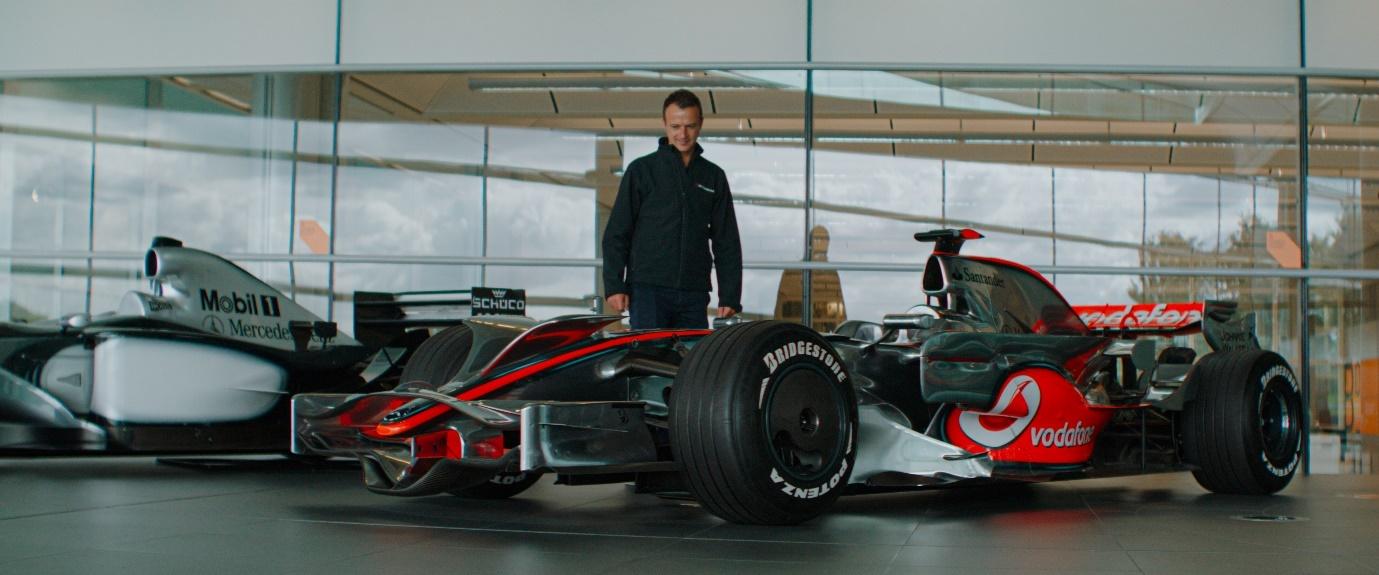
The deployment of Dynisma’s DMG-1 enables McLaren to achieve a higher level of correlation across the entire development loop – from CFD simulations and wind tunnel mapping through simulator trials and real-world validation. This creates a seamless bridge between virtual and physical testing, unlocking a faster, more efficient, and more sustainable path to innovation.
For W1, engineers used DMG-1 to deliver precise, real-time simulations of downforce, aerodynamic load, and suspension interaction, enabling robust and efficient optimisation of active aero systems. This proof of concept paves the way for greater integration of simulation into McLaren’s future programmes as the company expands into new product categories.
Ash Warne, Founder and CTO of Dynisma, said: “We are proud that McLaren Automotive has chosen Dynisma to power its virtual development with our DMG-1 simulator. This installation is a milestone for McLaren’s future automotive development. Our technology enables manufacturers to replicate reality with exceptional precision, accelerating innovation, reducing dependence on prototypes, and helping deliver cars that are more finely tuned than ever before.”
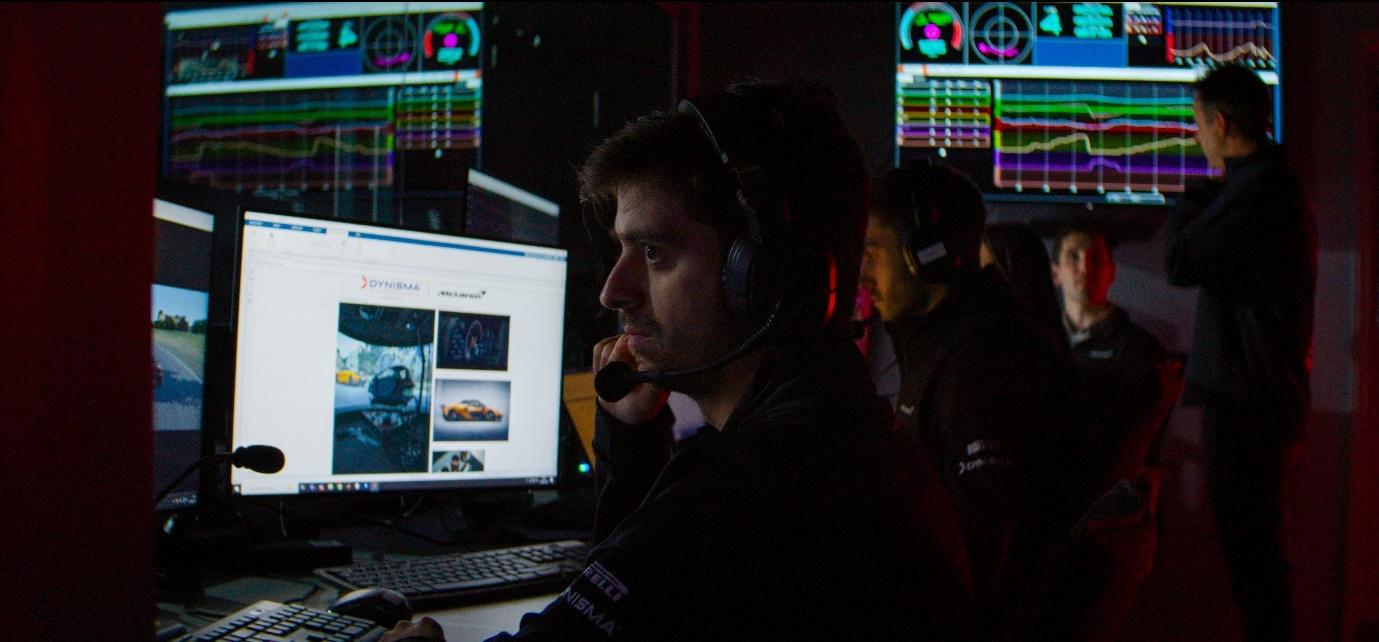
“A simulator of this fidelity is not just a tool for drivers – it allows engineers to integrate and analyse systems across the car,” notes Mark Salmon, Principal Engineer at McLaren Automotive. “We can assess tyre and suspension behaviour, develop control strategies and predict duty cycles before a single part is manufactured.”

Christopher Harrison, Vehicle Integration Director and Deputy CTO at McLaren Automotive, said: “The simulator is an incredibly critical tool in terms of helping us bring together the soul of the car. One of the biggest technical challenges with the W1 is how we bring together the performance to a car that is capable on the road, and this is a tool that enables us to build on our world-class virtual methodologies in terms of designing and delivering cars to meet our customers’ expectations.”
The validation of the W1’s active aero systems using DMG-1 exemplifies how simulation can foster engineering excellence and deliver some of the world’s most exhilarating driving experiences.


